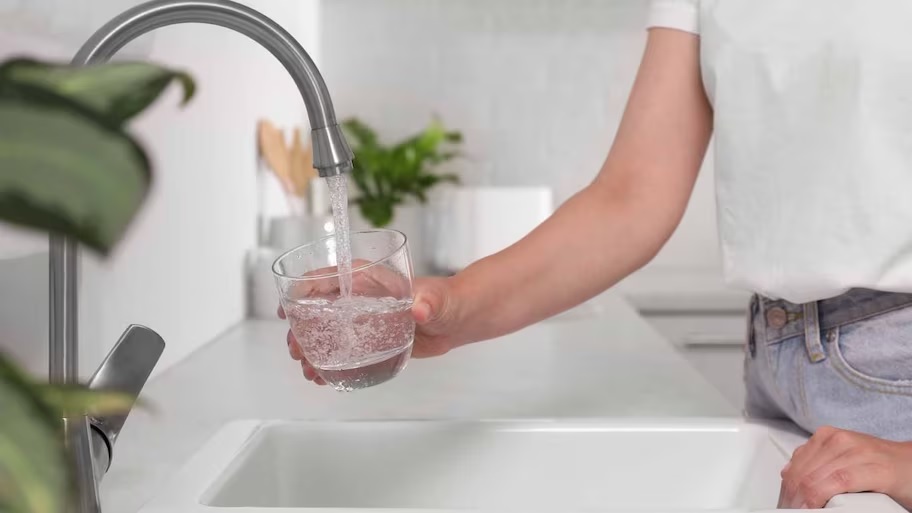When it comes to plumbing systems, water pressure and installation quality are two of the most fundamental aspects that determine the efficiency and functionality of your home’s water supply. Both factors are crucial for maintaining a consistent and reliable water system, but the way they interact can be quite complex. While water pressure is vital for ensuring that you have adequate flow for daily tasks, installation quality sets the stage for how well your plumbing performs in the long term. This article explores the delicate balance between water pressure and installation, highlighting how each factor influences your plumbing system and what you should prioritize when making decisions about your home’s plumbing.
Understanding Water Pressure
Water pressure is the force at which water flows through pipes. It is measured in pounds per square inch (psi), and the higher the psi, the greater the pressure. Optimal water pressure typically falls between 40 and 80 psi, depending on local regulations and the specific needs of the home. Too high a pressure can lead to damaging effects, while too low a pressure can make daily tasks like showering, washing dishes, and doing laundry inefficient and frustrating.
Water pressure is influenced by several factors, including the height of your water supply source, the size of your pipes, the condition of your plumbing system, and whether or not your home has a water pressure booster. For example, homes located at the top of a hill may experience lower water pressure due to gravity, while homes closer to the water supply might experience higher pressure. In general, high water pressure is often seen as an asset, promising faster water flow and greater convenience. However, if left unchecked, excessive water pressure can strain your plumbing system, potentially leading to leaks, burst pipes, or even appliance damage.
The Role of Installation Quality
The installation quality of your plumbing system has a lasting impact on how well water pressure is maintained. From the materials used in your pipes to the configuration of your plumbing layout, professional installation can significantly affect your system’s performance. Poor installation practices can result in a range of issues, from leaks to inefficient water flow, and may require expensive repairs down the line.
The materials used in plumbing installation are equally important when considering both water pressure and overall system durability. Copper, PVC, and PEX are common pipe materials, each with their own strengths and weaknesses. Copper pipes, for instance, are highly durable and resistant to corrosion, but they can be expensive. PVC pipes are more affordable and resistant to corrosion, but they are not as durable in extreme temperatures. PEX, on the other hand, is flexible, cost-effective, and resistant to cracking, making it a popular choice for modern plumbing systems.
Moreover, the installation process itself can influence how well your plumbing system handles water pressure. Proper pipe sizing is critical in ensuring the right flow of water throughout your home. Pipes that are too narrow for the volume of water required will result in low pressure, while pipes that are too wide may lead to wasted energy and water. Furthermore, the configuration of the plumbing system, including the layout of branches and the use of valves and pressure regulators, must be designed with efficiency in mind to maintain consistent water pressure across all fixtures.
Water Pressure vs. Installation: What Works Best?
When considering the effectiveness of water pressure and installation quality, it’s essential to recognize that they are not separate, competing factors but rather interconnected elements that work together to create an efficient plumbing system. Both are necessary for optimal performance, but the balance between the two can determine whether your plumbing system functions smoothly or experiences frequent issues.
Water Pressure: The Key to Efficiency and Convenience
Adequate water pressure is essential for maintaining a functional plumbing system. Low water pressure can be a major inconvenience, making routine activities like taking a shower or using the dishwasher a tedious task. Without proper pressure, water may trickle out of your faucets, making it difficult to clean, rinse, or wash. Additionally, low pressure can lead to longer wait times for hot water, which can be both frustrating and energy-inefficient.
On the other hand, high water pressure offers an immediate benefit of faster flow and convenience. Showers feel more invigorating, faucets dispense water more quickly, and appliances such as washing machines operate more efficiently. However, as mentioned, excessive pressure can cause significant damage to the plumbing system, leading to leaks, burst pipes, and appliance failure. High pressure can also place undue stress on fixtures and valves, reducing their lifespan. For this reason, it’s essential to strike the right balance by ensuring that water pressure is neither too high nor too low.
Installation Quality: Ensuring Longevity and Performance
Installation quality plays a vital role in how well your plumbing system manages water pressure over time. A poorly installed system is more prone to problems such as leaks, cracks, and inefficient flow, which can disrupt water pressure and lead to expensive repairs. Even if you have high water pressure, a subpar installation could result in uneven distribution, where certain parts of your home may experience low pressure due to poor pipe layout or undersized pipes.
For instance, if the water supply pipes are installed incorrectly or too tightly, the pressure may become inconsistent, leading to pressure fluctuations that can cause frustration and inconvenience. Similarly, incorrect pipe sizing or installation of incompatible materials can compromise the water pressure and reduce the system’s overall effectiveness.
Furthermore, installation quality impacts how well a system can handle fluctuations in water pressure. In homes with fluctuating or inconsistent pressure, high-quality installation ensures that pressure regulators, backflow preventers, and other control mechanisms are in place to safeguard the system. These tools help maintain steady pressure throughout the house, preventing the system from being overwhelmed by sudden spikes or drops in pressure.
Which Should You Prioritize: Water Pressure or Installation?
When considering upgrades or repairs to your plumbing system, the answer isn’t always straightforward. Ideally, both water pressure and installation quality should be given equal attention to ensure an optimal plumbing experience. If your home is experiencing low water pressure, the issue may not be a simple fix. Poor installation practices, outdated pipes, or even municipal water pressure problems could be contributing factors.
If you’re starting from scratch with a new home or a major plumbing overhaul, focusing on proper installation quality should be the first priority. A well-installed system using the right materials and techniques will handle water pressure more effectively, provide greater durability, and reduce the need for future repairs. Once the system is properly installed, you can then focus on ensuring that the water pressure is ideal for your needs, making adjustments as necessary to avoid damage.
Conclusion
In the debate between water pressure and installation quality, the ultimate answer lies in understanding that they are complementary elements of a well-functioning plumbing system. While water pressure provides the convenience and functionality needed for day-to-day tasks, installation quality ensures that the system will perform reliably and efficiently over time. By prioritizing both factors and ensuring that your plumbing system is installed correctly, you can enjoy the benefits of high water pressure without compromising the longevity or efficiency of your pipes. Whether you’re building a new home or upgrading an existing system, the right balance between water pressure and installation quality is key to creating a plumbing system that meets your needs both now and in the future.

